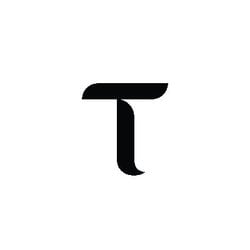They are the value of benefits sacrificed to do business and can only be estimated. Yes, explicit costs incurred for legitimate business are generally tax-deductible, reducing a company’s taxable income and lowering its overall tax liability. Careful tracking and controlling explicit costs allow established businesses to optimize resources, assess profitability, and make informed decisions to ensure continued success. You can carefully assess explicit costs to estimate the financial outlay required for the investment or expansion. Evaluating explicit costs against potential returns enables businesses to gauge the profitability and feasibility of the investment or expansion opportunity.
I. Average Fixed Cost (AFC):
It means that AFC can neither touch X-axis (because TFC can never be zero) nor Y-axis (because TFC is positive at zero output level and if we divide any value by zero, it will be an infinite value). As the Total Fixed Cost remains the same at all output levels, the change in Total Cost completely depends upon Total Variable Cost. Moreover, it’s important to note that certain costs are eligible for tax deductions. You can optimize your deductions and reduce the tax burden by effectively tracking direct and indirect costs. The estimated value of the inputs supplied by the owners along with the normal profits is known as Implicit Cost.
Implicit costs imply expenses where payments are not made out to any individual or firm. Explicit costs are business operating costs, or expenses, that are easily quantifiable and identifiable. Implicit costs refer to the opportunity costs of using the resources and are considered important while making economic decisions.
The Financial Modeling Certification
Opportunity costs are used to compare various alternatives for utilizing or deploying a company’s resources. Just like Average Variable Cost, average cost also initially falls with an increase in output. Once the output increases till the optimum level, explicit cost the average cost starts to rise. Accounting profit and economic profit are the two main types of profit. Cost that remains constant even without the level of production output. Per unit costs which explain the relationship between the cost and output.
Explicit costs vs implicit costs
If it chooses that alternative, then the implicit opportunity cost is the $1,500 in interest that it could’ve earned by leaving the money in its bank account. Once the output increases till the optimum level, the average variable cost starts to rise. Explicit costs can significantly impact start-ups, as they often face tighter financial constraints and must carefully manage expenses from the beginning.
By being aware of the definition, examples, and how explicit costs work, you can make informed choices that align with your financial goals. Remember to consider both explicit and implicit costs when evaluating the true cost of a decision. By effectively managing your explicit costs, you can enhance your financial stability and achieve long-term financial success.
- In contrast, “implicit” refers to indirect or something that is implied.
- Explicit costs refer to monetary transactions made to others that result in cash outflows.
- Remember to consider both explicit and implicit costs when evaluating the true cost of a decision.
- Individuals and firms can make better decisions in which not only explicit costs are considered but also implicit costs are included for all the available options.
- Advanced technologies enable businesses to accurately track and analyze explicit costs, making informed decisions to control expenses and improve overall financial performance.
How Does Explicit Cost Work?
Economic profit is total revenue minus total cost, including both explicit and implicit costs. The difference is important because even though a business pays income taxes based on its accounting profit, whether or not it is economically successful depends on its economic profit. Explicit costs refer to the actual out-of-pocket expenses incurred by a business in its operations. These costs are directly measurable and represent tangible monetary payments made to acquire resources or services.
Explicit cost or explicit expense refers to a tangible and quantifiable expenditure resulting in a cash outflow from a company’s financial records. It helps create long-term strategic goals while evaluating profitability. This helps the business to keep the accurate record of all the expenses incurred and hence provide financial accountability. As noted, the explicit costs of a company include all monetary payments that the company makes – all outgoing cash flow – in the ordinary course of operating its business. Explicit expenses are shown on the organization’s general ledger and income statements.
The implicit costs that a company incurs are often what is referred to as opportunity costs. In easier words, implicit costs are opportunity costs of using your resources or assets in the course of your own business setup instead of selling or renting them out. They are not so easily identifiable or recognizable, and therefore cannot be accurately measured. Hence, it is impossible to account for them on the company’s general ledger. Economic profit is total revenue minus total cost, including both explicit and implicit costs.
Importance of Economic Profit
To be able to do that, entities should have a clear understanding of all elements involved while generating profits. As the costs are one of the major determinants of net earnings for a period, businesses should have a thorough understanding of all types of costs incurred during the period. Yes, explicit costs can be used as a benchmark for comparing businesses, providing insights into cost structures and efficiency levels across different companies or industries. No, explicit costs can vary among different types of businesses based on their unique operations, industry, and cost structures. Thus, cost in economics refers to both the actual money spent on inputs (also known as the explicit cost) and the imputed value of the inputs provided by the owners (also known as the implicit cost).
- While some of these costs may not be immediately apparent, explicit costs are easy to identify and are directly tied to monetary transactions.
- In this case, the lost leisure would also be an implicit cost that would subtract from economic profits.
- Also, these costs arise till there is production and become zero at zero output level.
- An explicit costs are measurable and will be included in profit/loss accounts.
Explicit costs can include a wide range of expenses, including wages, rent, utilities, raw materials, and other direct payments made by the company in the course of its operations. Total cost is what the firm pays for producing and selling its products. Recall that production involves the firm converting inputs to outputs. We will learn in this chapter that short run costs are different from long run costs. For example, if you decide to start your own business instead of taking a well-paying job, the foregone salary would be the implicit cost. It’s crucial to consider both explicit and implicit costs when making financial decisions, as they paint a more accurate picture of the true cost of a choice.
III. Average Total Cost (ATC) or Average Cost (AC):
For example, working in the business while not earning a formal salary, or using the ground floor of a home as a retail store are both implicit costs. Implicit costs also include the depreciation of goods, materials, and equipment that are necessary for a company to operate. Depreciation is the decline in the value of any capital due to its constant usage.













